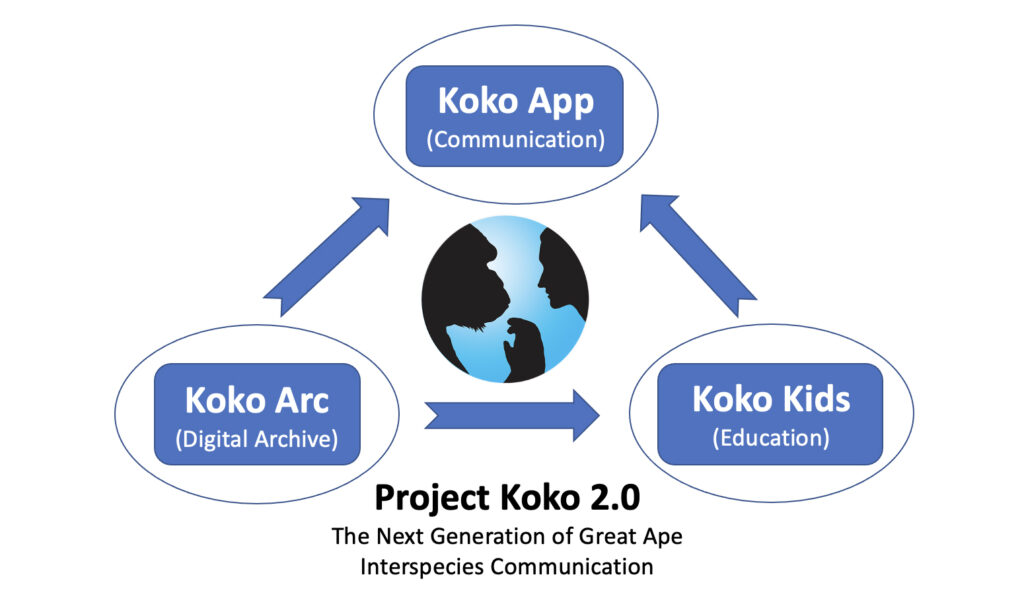Who is Koko and What is the Koko App?
Koko is perhaps the world’s most famous gorilla. Known mainly for her ability to communicate in sign language (she learned over 1000 signs, and understood even more spoken words), and her gentleness with (and empathy for) other species (such as cats, birds, butterflies and humans) she almost single-handedly changed the paradigm of gorillas from “King Kong” to “Koko’s Kitten.”
Though Koko passed away in 2018, our 5-decade interspecies communication study with her produced an immense multimedia research archive. The Koko App is designed to apply this rich archive to benefit future generations of humans and other great apes. In particular, it will enable humans and gorillas to learn sign language from Koko herself (an inspiring teacher) and to apply this language (which is valuable in its own right) to interpret Koko’s videos and books in ways that will expand interspecies empathy, promote conservation, and continue our dialogue with other animals.
The Koko App is designed to transmit Koko’s legacy of “conservation through communication” by teaching humans to communicate with gorillas like Koko (and each other) in American Sign Language (ASL) — with Koko as their teacher — as well as using gorilla natural gestures. It also opens a window into the gorilla mind that, with the help of compelling video content collected over 5 decades, will increase interspecies empathy and enable us all to continue our dialogue with great apes.
Interspecies Communication is a vital pathway to appreciating and protecting our vanishing species as well as Nature itself. The KokoApp will make this powerful tool more accessible with respect to great apes, and leverage one of the greatest lessons of Project Koko — all gorillas are essentially Kokos! Thus, they all can benefit from the gifts of 2-way communication with their human caregivers, and act as articulate ambassadors for their critically endangered species.
We have a preliminary design for the app, as described below, but need help with the final design and implementation.
The 5 principal capabilities of the Koko App are:
1) Learn to Sign with Koko (and Penny)
2) Learn about the Gorilla Mind
3) Interpret the Project Koko Video Archive
4) Translate Zoo Gorilla Natural Gestures
5) Help Save Gorillas from Extinction and Preserve Nature
as described below in greater detail (and illustrated dynamically in the video above).
Top

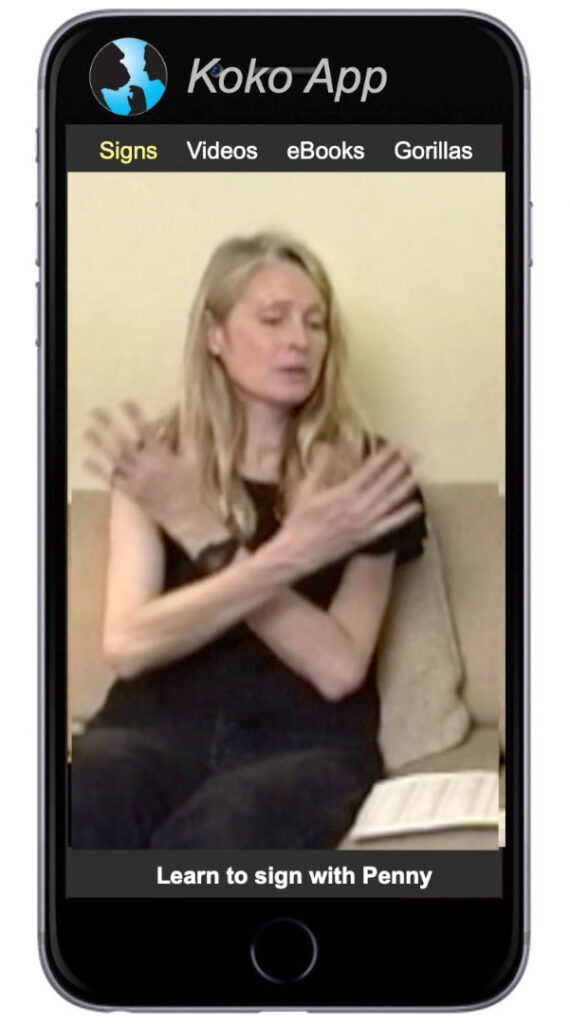
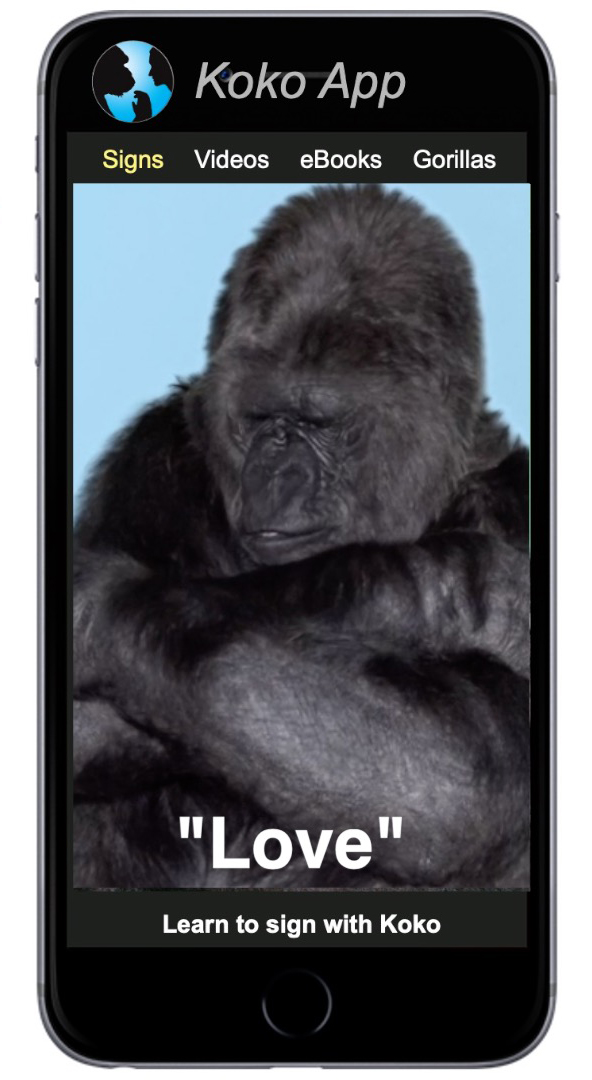
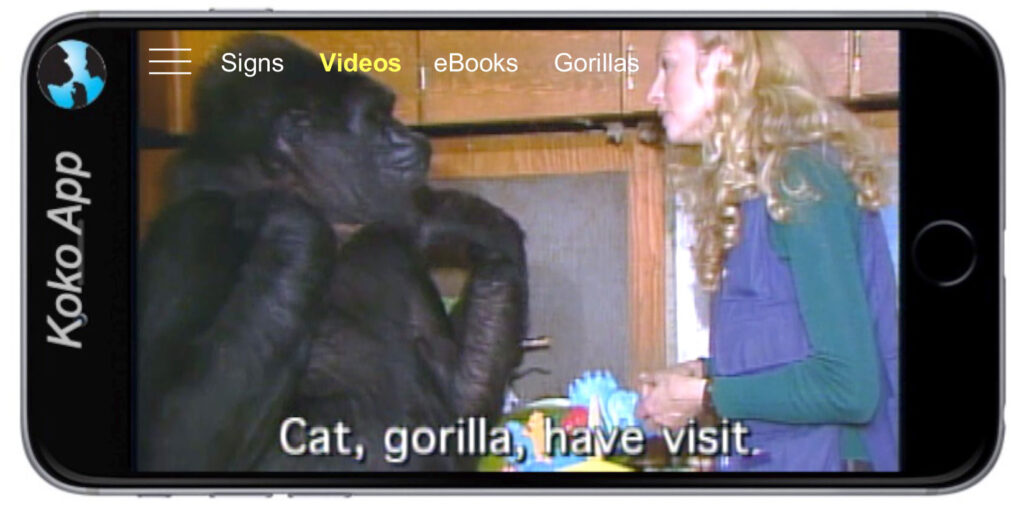
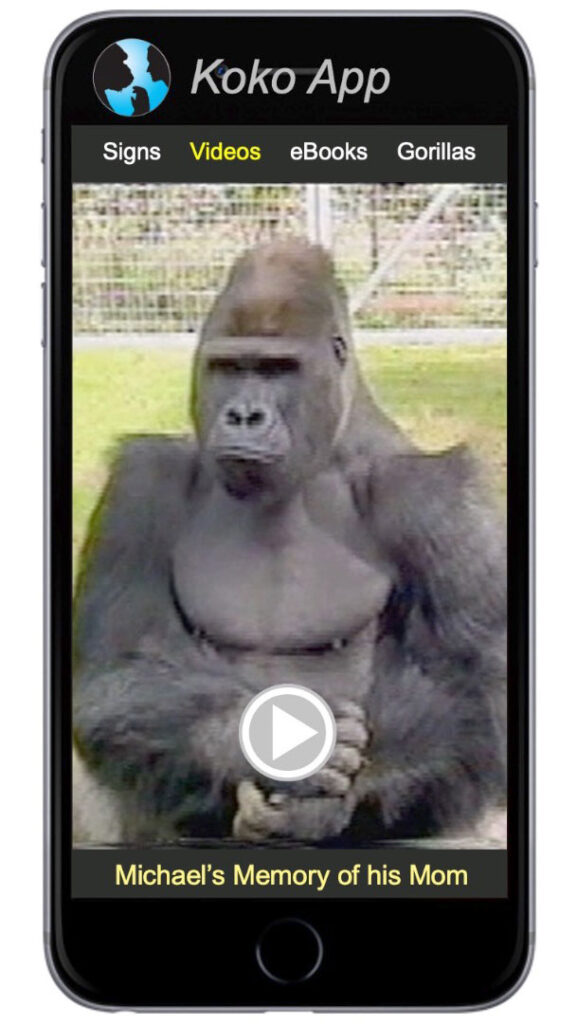
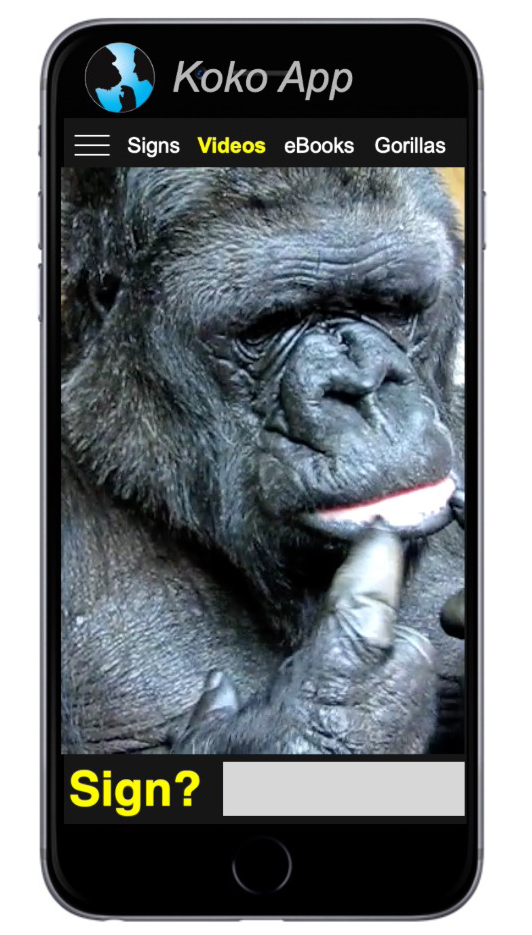
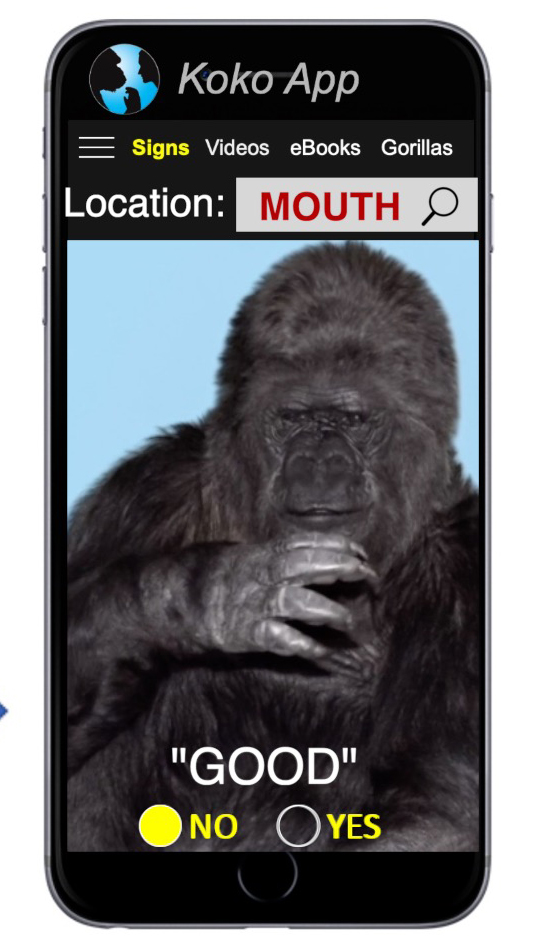
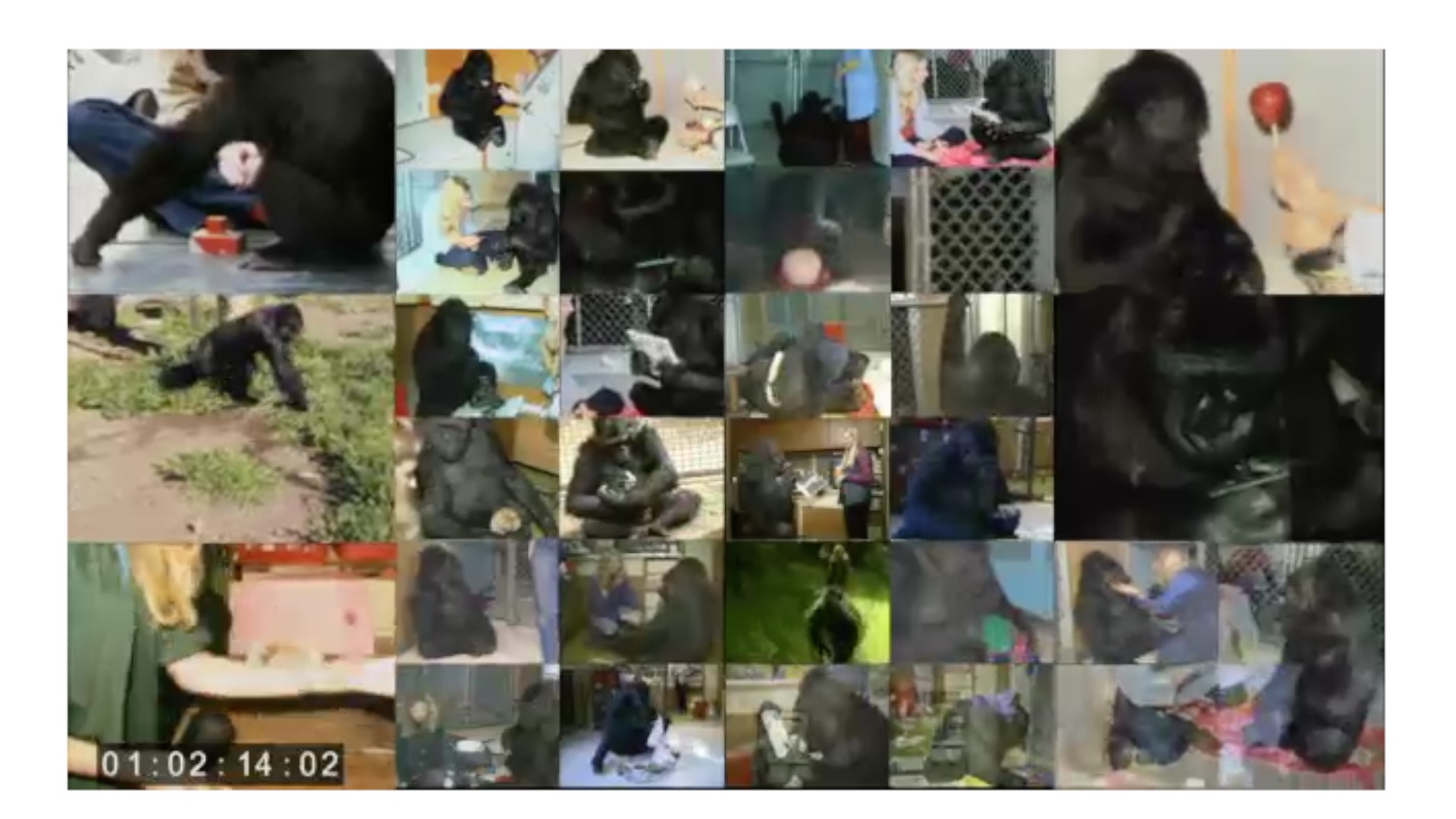
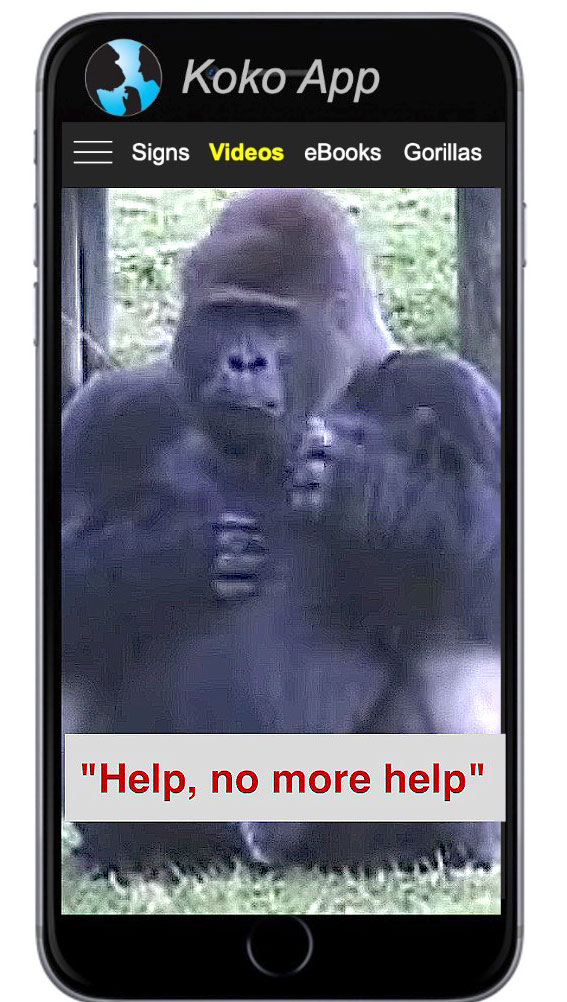
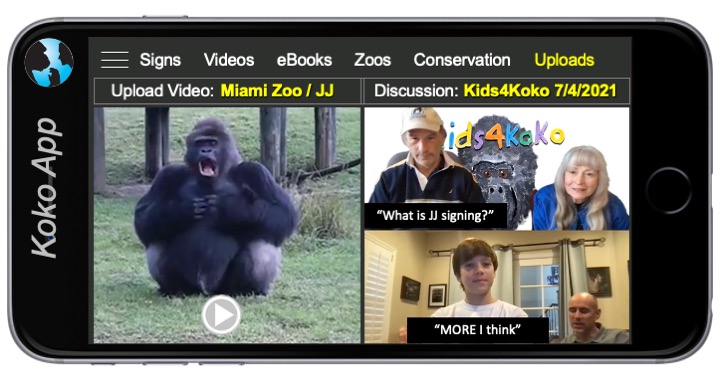
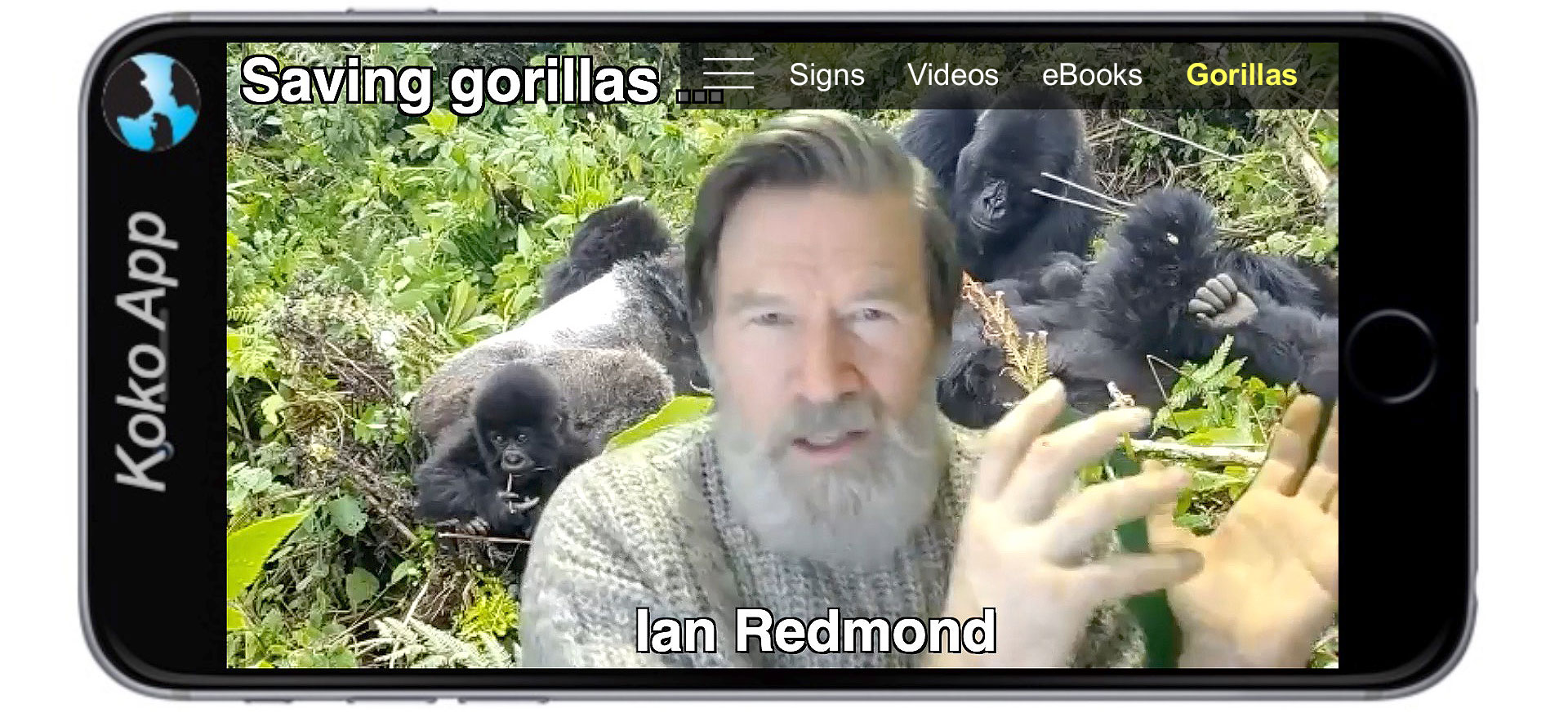 Mock-up tutorial featuring world-renowned
Mock-up tutorial featuring world-renowned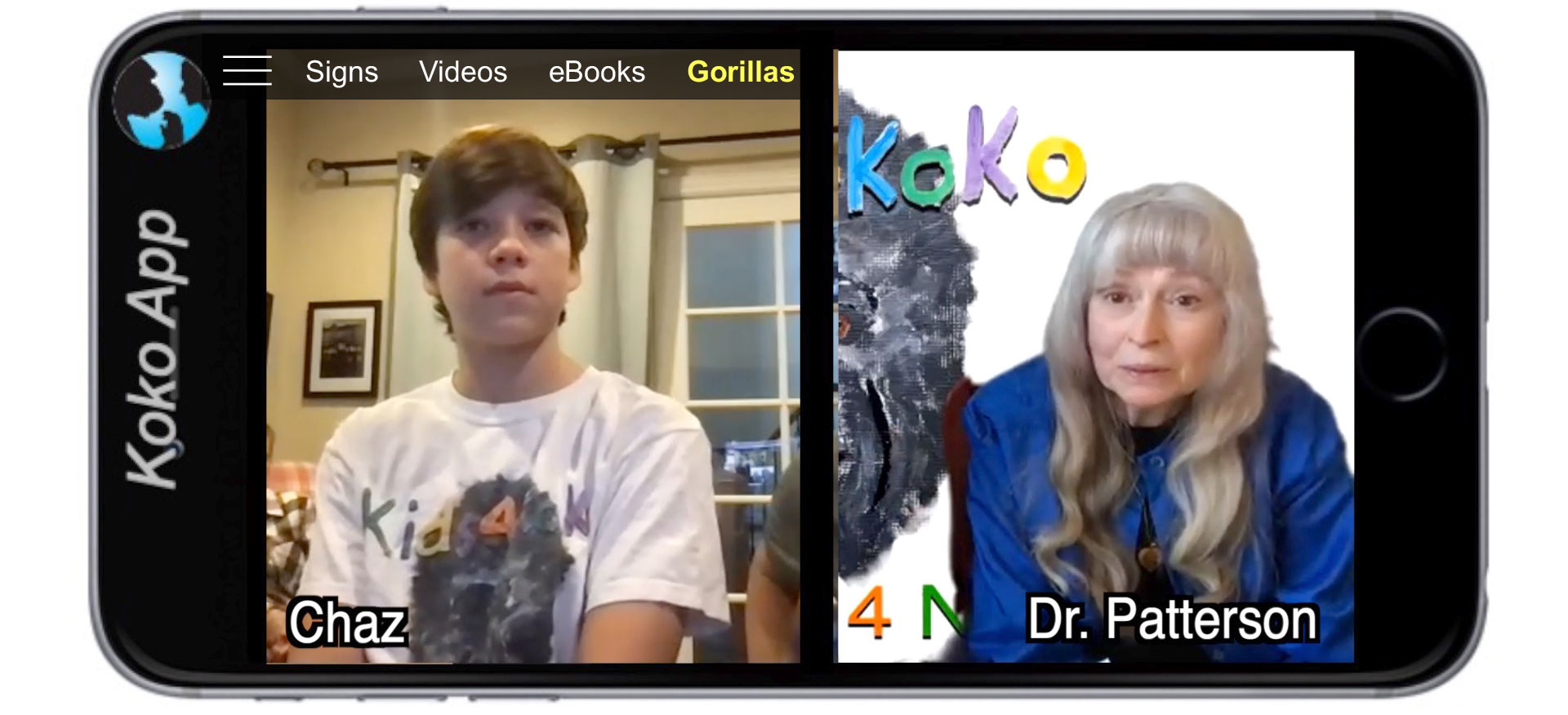 Mock-up tutorial featuring Dr Penny Patterson discussing interspecies communication at zoos
Mock-up tutorial featuring Dr Penny Patterson discussing interspecies communication at zoos